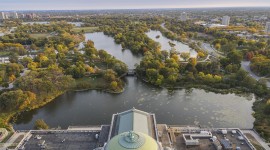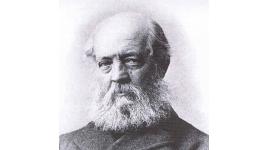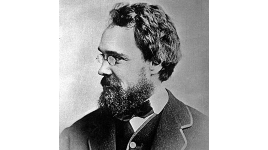More Concerns About the Obama Center as Archaeology Report on Jackson Park Faces New Scrutiny
In order for the Obama Presidential Center (OPC) to be built on 19.3 acres of Chicago’s historic Jackson Park, which was designed by Frederick Law Olmsted and Calvert Vaux and is listed in the National Register of Historic Places (NHRP), it will need to gain approvals at both the municipal and federal levels; it will also need to survive a lawsuit challenging the legality of using public parkland for a private enterprise, along with other issues. Part of the federal-level review concerns compliance with Section 106 of the National Historic Preservation Act. This will determine the degree to which the park would be adversely affected by construction and changes associated with the OPC and how those adverse effects could be mitigated (if at all). Jackson Park was the site of the 1893 World’s Columbian Exposition, a seminal event in the late nineteenth century that drew millions of attendees during its six-month run. Though subsequent fires consumed portions of the exposition grounds, the presence of archaeological remains is significant. Indeed, the APE (Area of Potential Effects) already established for the archaeological portion of the review process intersects with the remains of at least 64 structures from the 1893 Exposition and thousands of other artifacts.
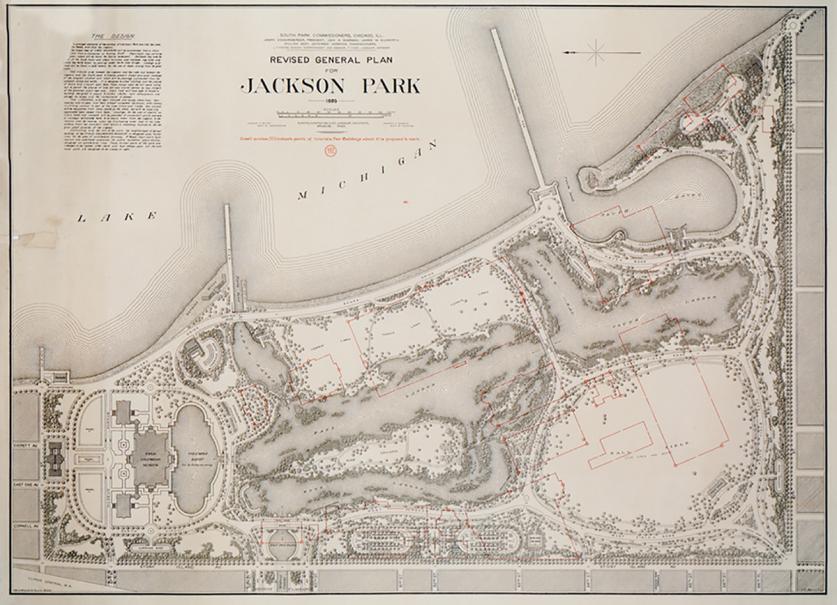
The archaeology associated with the World’s Columbian Exposition and Jackson Park is a critical component of the Section 106 review process. The Secretary of the Interior’s Guidelines for the Treatment of Cultural Landscapes specifically addresses the presence of archaeological resources, instructing that “prehistoric and historic archaeological resources may be found in cultural landscapes above and below ground…These resources not only have historical value, but can also reveal significant information about a cultural landscape. The appropriate treatment of a cultural landscape includes the identification and preservation of significant archaeological resources.” To gain context and understanding about the archaeological resources in Jackson Park, The Cultural Landscape Foundation (TCLF) spoke with Dr. Rebecca Graff, chair of the American Studies Program at Lake Forest College. Dr. Graff’s 2007 survey and 2008 excavations in Jackson Park were the only systematic archaeological research project completed at the site and registered with the State of Illinois prior to the current federal reviews. Her insights about the value of the archaeological remains are, therefore, uniquely relevant (see below).
The Section 106 review will look at the park’s significance through the lens of several criteria – lettered A through D. Criterion D most directly focuses on archaeology and relates to the extent that the site “[has] yielded or may be likely to yield, information important in history or prehistory.” In March 2018, the Illinois State Archaeological Survey (ISAS) published its report (“Section 106 Archaeological Properties Identification Report”) on archaeological investigations in Jackson Park, as mandated by the ongoing Section 106 process in regard to the construction of the OPC. Astonishingly, despite logging an inventory of nearly 10,000 artifacts, the report concluded: “the portions of the sites within the Area of Potential Effect (APE) lack the potential to contribute significant new knowledge under Criteria D of the NRHP, and no further work is recommended.”
TCLF has challenged those findings, arguing that the archaeological remains are eligible under Criterion D and should have been additionally evaluated under Criterion A because, as the site of the World’s Columbian Exposition of 1893 and a nationally important example of a reform-era park, Jackson Park is a site “associated with events that have made a significant contribution to the broad patterns of our history”—the very definition of Criterion A. The use of Criterion A to evaluate cultural material has evolved significantly over the past few decades, and most archaeologists no longer evaluate sites for their significance solely under Criterion D.
After the City of Chicago posted a very brief response (comprising two sentences) dismissing those concerns, TCLF asked for guidance from the Advisory Council on Historic Preservation (ACHP), the independent federal agency whose primary role is to advise on national policy related to historic preservation. As TCLF’s letter to the ACHP indicated, “The refusal to evaluate the archaeological sites under Criterion A represents a failure to analyze the material culture in the larger context of Jackson Park and its cultural significance, both as an historically important, planned cultural landscape and an indispensable national example of reform-era recreational planning.”
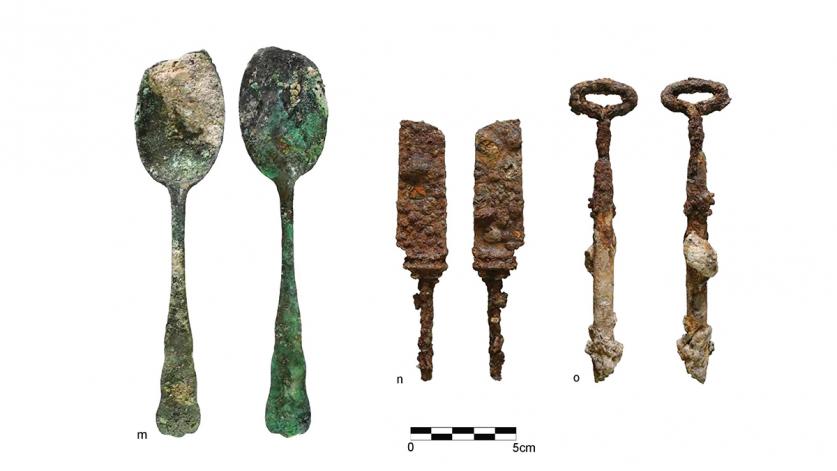
In its efforts to understand the position of the Illinois Historic Preservation Agency (a.k.a. the Illinois SHPO) regarding the findings of the archaeological report, made available in the Spring of 2018, TCLF learned that that agency’s on-staff archaeologist had, in fact, retired in December 2017, and the position had gone unfilled until July 2018. In the critical interim period when the ISAS report was reviewed, the agency, in essence, outsourced that job to an archaeologist working with the U.S. Army Corps of Engineers. The deputy state historic preservation officer who oversaw the review was also unavailable to provide insights because she vacated that position on July 31, 2018, giving one week’s notice.
TCLF therefore turned to Dr. Graff. Of the seven discrete archaeological sites considered in the ISAS report, three of them were sites excavated and published by her (referenced in the report as sites 11CK1105; 11CK1106; and 11CK1107). The ISAS report “revisited” those three sites, using the very data and archaeological materials that Graff discovered. Because Graff’s excavations (published in 2011) were not conducted in relation to the current federal undertaking (i.e., construction of the OPC and the related road work in Jackson Park), the sites she identified within the park have not been previously evaluated for their eligibility in the National Register of Historic Places.
Contrary to the findings of the ISAS report, Dr. Graff told TCLF that she believes “the sites in question would contribute new knowledge.” She also explained why applying Criterion A is the appropriate action:
The World’s Columbian Exposition is a singularly important event in American history—why else does it continue to be the object of study by academics, history buffs, and even fiction writers? It is used and referenced in the Obama Presidential Center’s choice of Jackson Park, and was part of the language of the Chicago 2016 Olympic bid. So much primary, secondary, and tertiary literature (i.e., bibliographic guides to the literature of the Fair) has been written on the 1893 World’s Columbian Exposition alone and continues to be written that it is not hard to see its fit with Criterion A.
The ISAS report itself seems to admit that the archaeological finds have much to add to our historical knowledge. At one of the four newly investigated archaeological sites (11CK1292), layers of burned material from a massive incinerator that operated during the 1893 World’s Fair had been deposited “away from the public gaze.” The report goes on to say that, “It seems that the perfect removal of garbage from the “City of the Future” was not accomplished, although this fact is elided in the contemporary documents and later writings" (p. 67, emphasis added). In other words, the archaeological deposits discussed in the ISAS report already represent an important correction to the historical record.
Graff agreed with that assessment, adding that the archaeological record is the very resource that promises most to shed new light on what we think we know from the written record:
What we write—especially in official documentation like contemporary reports from the Fair’s planners—is often different than what we actually do, or what actually happened. This could be by design, or by faulty recollection: consider any diary entry. Add to that that not everyone who worked on the sanitation projects of the Fair may have been literate, or even would have had their findings recorded in the official Fair narratives. Having another evidentiary line to read against the plans of the Fair is invaluable. Finally, some things of daily life seem so unimportant that they may not have been recorded at the time, but in 2018, might seem very different and interesting to understand.
A response from the ACHP is forthcoming, and TCLF will update this story accordingly.




